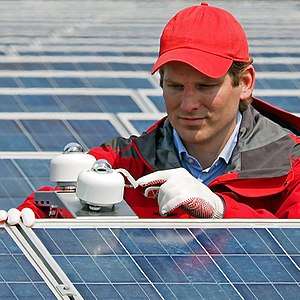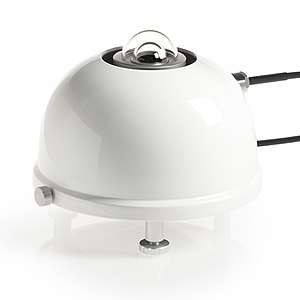Photovoltaic system performance
Photovoltaic performance monitoring systems serve several purposes. They are used to track trends in a single photovoltaic (PV) system, to identify faults in or damage to solar panels, to compare the performance of a system to design specifications or to compare PV systems at different locations. This range of applications requires various sensors and monitoring systems, adapted to the intended purpose. Sensors and monitoring systems are standardized in IEC 61724-1[1] and classified into three levels of accuracy, denoted by the letters “A”, “B” or “C”, or by the labels “High accuracy”, “Medium accuracy” and “Basic accuracy”.

Irradiance sensors
On-site irradiance measurements are an important part of PV performance monitoring systems. Irradiance can be measured in the same orientation as the PV panels, so-called plane of array (POA) measurements, or horizontally, so-called global horizontal irradiance (GHI) measurements. Typical sensors used for such irradiance measurements include thermopile pyranometers, PV reference devices and photodiode sensors. To conform to a specific accuracy class, each sensor type must meet a certain set of specifications. These specifications are listed in the table below.
| Sensor type | Class A
High accuracy |
Class B
Medium accuracy |
Class C
Basic accuracy |
|---|---|---|---|
| Thermopile pyranometer | Secondary standard per ISO 9060
or High quality per WMO Guide (Uncertainty ≤ 3 % for hourly totals) |
First class per ISO 9060
or Good quality per WMO Guide (Uncertainty ≤ 8 % for hourly totals) |
Any |
| PV reference device | Uncertainty ≤ 3 %
from 100 W/m2 to 1500 W/m2 |
Uncertainty ≤ 8 %
from 100 W/m2 to 1500 W/m2 |
Any |
| Photodiode sensors | Not applicable | Not applicable | Any |

If an irradiance sensor is placed in POA, it must be placed at the same tilt angle as the PV module, either by attaching it to the module itself or with an extra platform or arm at the same tilt level. Checking if the sensor is properly aligned can be done with portable tilt sensors or with an integrated tilt sensor.[2]
Maintenance
The standard also specifies a required maintenance schedule per accuracy class. Class C sensors require maintenance per manufacturer's requirement. Class B sensors need to be re-calibrated every 2 years and require a heater to prevent precipitation or condensation. Class A sensors need to be re-calibrated once per year, require cleaning once per week, require a heater and require ventilation (for thermopile pyranometers).
Satellite remote sensing of irradiance
PV performance can also be estimated by satellite remote sensing. These measurements are indirect because the satellites measure the solar radiance reflected off the earth surface. In addition, the radiance is filtered by the spectral absorption of Earth's atmosphere. This method is typically used in non-instrumented class B and class C monitoring systems to avoid costs and maintenance of on-site sensors. If the satellite-derived data is not corrected for local conditions, an error in radiance up to 10% is possible[1].
See also
References
- IEC 61724-1:2017 – Photovoltaic system performance – Part 1: Monitoring (1.0 ed.). International Electrotechnical Commission (IEC). 2017 [1998-01-01]. Archived from the original on 2017-08-25. Retrieved 2018-05-16.
- "SR30 pyranometer | compliant with IEC 61724-1 Class A requirements". www.hukseflux.com. Retrieved 2018-05-16.